- Home
- Arthur C. Clarke
Rama Revealed r-4
Rama Revealed r-4 Read online
Rama Revealed
( Rama - 4 )
Arthur C. Clarke
Gentry Lee
“Rama Revealed” (1993) is a science fiction novel by Arthur C. Clarke and Gentry Lee. It is the last of three sequels to Clarke's “Rendezvous with Rama” by these authors, and as the title suggests reveals the mysteries behind the enigmatic “Rama” spacecraft.
The book picks up the story immediately after the end of “The Garden of Rama.” The book follows the story of Nicole Wakefield and her escape from imprisonment left at the cliffhanger of the previous book.
As the human colony continues to degenerate with respect to living conditions and human rights, the members of Nicole's family escape to the region nicknamed “New York”, where they come into contact with the third alien species, known as “Octospiders” living in the Rama spacecraft. The Octospiders were a simple species until a space-faring species made contact with them and forever changed their society. Undergoing genetic enhancements, the Octospiders were eventually able to form a utopia of sorts.
Eventually, the situation becomes dire enough that Rama's controlling intelligence intervenes to end the conflict caused by the Humans onboard.
The Rama spacecraft rendezvous with an enormous “Tetrahedron” near the star Tau Ceti, at a place designed to research any intelligent life capable of spaceflight.
Arthur C. Clarke and Gentry Lee
Rama Revealed
ACKNOWLEDGMENTS
We would like to thank Neal and Shelagh Ausman, as well as Gerry and Michelle Snyder, for representing the readers in making suggestions about topics that should be addressed in Rama Revealed. Gerry was also extremely helpful in discussions about the details of the octospider language.
Our Bantam editor Jennifer Hershey has been a source of strength and support throughout the development and writing of this novel, providing both unflagging encouragement and valuable recommendations about all aspects of the book. Thank you, Jennifer. We are also indebted to Richard Evans at Gollancz for several specific editorial remarks, including the suggestion of adding a prologue.
Lou Aronica and Russ Galen, our publisher and our agent, have helped us in countless ways during the five years since the Rama trilogy sequel was originally conceived. Their many contributions have allowed us to focus our energies on the actual writing of the novels.
Our final thanks go to our families, for their love and understanding throughout this time period. To Stacey Kiddoo Lee especially, we extend our heartfelt appreciation, not only for her willingness to manage a family of five small boys in the presence of difficult (and changing) constraints, but also for her insightful comments about Nicole and the other leading female characters of the trilogy.
PROLOGUE
In one of the outlying spiral arms of the Milky Way Galaxy, an inconspicuous, solitary yellow star slowly orbits the galactic center thirty thousand light-years away. This stable star, the Sun, takes two hundred and twenty-five million years to complete one revolution in its galactic orbit. The last time the Sun was in its present position, giant reptiles of fearsome power had just begun to establish their dominion on the Earth, a small blue planet that is one of the satellites of the Sun.
Among the planets and other bodies in the family of the Sun, it is only on this Earth that any complex, enduring life has ever developed. Only on this special world did chemicals evolve into consciousness and then ask, as they began to understand the wonders and dimensions of the universe, if miracles similar to the ones that had produced them had indeed occurred elsewhere.
After all, these sentient Earthlings argued, there are a hundred billion stars in our galaxy alone. We are fairly certain that at least twenty percent of these stars have orbiting planets, and that a small but significant number of these planets have had, at some time in their history, atmospheric and thermal conditions conducive to the formation of amino acids and other organic chemicals that are the sine qua non for any biology we can reasonably hypothesize. At least once in history, here on Earth, these amino acids discovered self-replication, and the evolutionary miracle that eventually produced human beings was set into motion. How can we presume that this sequence occurred only that single time in all history? The heavier atoms necessary to create us have been forged in the stellar cataclysms exploding across this universe for billions of years. Is it likely that only here, in this one place, these atoms have concatenated into special molecules and evolved into an intelligent being capable of asking the question, “Are we alone?”
The humans on Earth began their search for cosmic companions first by building telescopes with which they could see their immediate planetary neighbors. Later, when their technology had developed to a higher level, sophisticated robotic spacecraft were sent to examine these other planets and to ascertain whether or not there were any signs of biology. These explorations proved that no intelligent life has ever existed.on any other body in our solar system. If there is anyone out there, the human scientists concluded, any peer species with whom we might eventually communicate, they must be found beyond the void that separates our solar system from ail the other stars.
At the end of the twentieth century in the human time system, the great antennae of the Earth began to search the sky for coherent signals, to determine if perhaps some other intelligence might be sending us a radio message. For over a hundred years the search continued, intensifying during the halcyon days of international science in the early twenty-first century, and then diminishing later, in the final decades of the century, after the fourth separate set of systematic listening techniques still failed to locate any alien signals.
In 2130, an unusual cylindrical object was observed approaching our solar system from the reaches of interstellar space. By that time, most thoughtful humans had concluded mat life was scarce in the universe and that intelligence, if it existed anywhere except on Earth, was exceedingly rare. How else, the scientists contended, can we possibly explain the lack of positive results from all our careful extraterrestrial search efforts of the last century?
The Earth was therefore stunned when, upon closer inspection, the object entering our solar system in 2130 was identified unambiguously as an artifact of alien origin. Here was undeniable proof that advanced intelligence existed, or at least had existed at some prior epoch, in another part of the universe. When an ongoing space mission was diverted to rendezvous with the drab cylindrical behemoth, which turned out to have dimensions greater than the largest cities on Earth, the investigating cosmonauts found mystery after mystery. But they were unable to answer the most fundamental questions about the enigmatic alien spacecraft. The intruder from the stars provided no definitive clues about its origin or purpose.
That first group of human explorers not only cataloged the wonders of Rama (the name chosen for the gigantic cylindrical object before it was known to be an extraterrestrial artifact), but also explored and mapped its interior. After the exploration team left Rama and the alien spaceship dove around the Sun, departing from the solar system at hyperbolic velocity, scientists thoroughly analyzed all the data that had been gathered during the mission. Everyone acknowledged that the human visitors to Rama had never encountered the actual creators of the mysterious spacecraft. However, the careful postflight analysis did reveal one inescapable principle of Raman redundancy engineering. Every critical system and subsystem in the vehicle had two backups. The Ramans designed everything in threes. The scientists considered it very likely that two more similar spacecraft would soon follow.
The years immediately after the visit from Rama I in 2130 were full of expectation on the Earth. Scholars and politicians alike proclaimed that a new era in human history had begun. The International Space Age
ncy (ISA), working with the Council of Governments (COG), developed careful procedures for handling the next visit from the Ramans. All telescopes were trained on the heavens, competing with each other for the acclaim that would come to the individual or observatory who first located the next Rama spacecraft. But there were no additional sightings.
In the second half of the 2130s an economic boom, fueled partially during its last stages by worldwide reactions to Rama, came to an abrupt halt. The world was plunged into the deepest depression in its history, known as the Great Chaos, which was accompanied by widespread anarchy and destitution. Virtually all scientific research activity was abandoned during this sorrowful era, and after several decades in which they were forced to address more mundane problems, people on the Earth had nearly forgotten the unexplained visitor from the stars.
In 2200 a second cylindrical intruder arrived in the solar system. The citizens of Earth dusted off the old procedures that had been developed after the first Rama had departed, and prepared to rendezvous with Rama II. A crew of twelve was chosen for the mission. Soon after the rendezvous, the dozen reported that the second Rama spacecraft was nearly identical to its predecessor. The humans encountered new mysteries and wonders, including some alien beings, but were still unable to answer questions about the origin and purpose of Rama.
Three strange deaths among the crew created great concern back on the Earth, where all aspects of the historic mission were followed on television. When the giant cylinder underwent a midcourse maneuver that placed it on a trajectory that would impact the Earth, this concern changed to alarm and fear. The leaders of the world reluctantly concluded that, in the absence of any other information, they had no choice except to assume that Rama II was hostile. They could not allow the alien spacecraft to impact the Earth, or to come close enough that it might deploy any advanced weapons it might possess. A decision was made to destroy Rama II while it was still a safe distance away.
The exploration crew was ordered home, but three of its members, two men and a woman, were still on board Rama II when the alien spaceship avoided a nuclear phalanx launched from the Earth. Rama maneuvered away from the hostile Earth and departed at high speed from the solar system, carrying both its intact secrets and the three human passengers.
It took thirteen years at relativistic velocities for Rama II to travel from the neighborhood of Earth to its destination, a huge engineering complex called the Node that was located in a distant orbit around the star Sirius. The three humans on board the giant cylinder added five children and grew into a family. As they investigated the marvels of their home in space, the family again encountered the extraterrestrial species they had met earlier. However, by the time they reached the Node, the humans had already convinced themselves that these other aliens were, like them, only passengers in Rama.
The human family remained at the Node for slightly more than a year. During this time the Rama spacecraft was refurbished and outfitted for its third and final journey to the solar system. The family learned from the Eagle, a non-biological creation of the Nodal Intelligence, that the purpose of the Rama series of spacecraft was to acquire and catalog as much information as possible about spacefarers in the galaxy. The Eagle, who had the head, beak, and eyes of an eagle plus the body of a human, also informed them that the final Rama spacecraft, Rama III, would contain a carefully designed Earth habitat that could accommodate two thousand people.
A video was transmitted from the Node to the Earth announcing the imminent return of the third Rama spaceship. This video explained that an advanced extraterrestrial species wished to observe and study human activity over an extended period of time and requested that two thousand representative humans be sent to rendezvous with Rama III in orbit around Mars.
Rama III made the voyage from Sirius back to the solar system at a velocity more than half the speed of light. Inside the spacecraft, sleeping in special berths, were most of the human family who had been at the Node. In Mars orbit this family greeted the other humans from Earth and the pristine habitat inside Rama was quickly settled. The resultant colony, which was called New Eden, was completely enclosed and separated from the rest of the alien spacecraft by thick walls.
Almost immediately Rama III accelerated again to relativistic velocities, blasting out of the solar system in the direction of the yellow star Tau Ceti. Three years passed without any outside interference in human affairs. The citizens of New Eden became so involved with their everyday lives that they paid scant attention to the universe outside their settlement.
When a set of crises stressed the fledgling democracy in the paradise that had been created for the humans by the Romans, an opportunistic tycoon seized power in the colony and began to ruthlessly suppress all opposition. One of the original Rama II explorers fled from New Eden at this time, eventually making contact with a symbiotic pair of alien species living in the adjacent enclosed habitat. His wife remained in the human colony and tried unsuccessfully to be a conscience for the community. She was imprisoned after a few months, convicted of treason, and eventually scheduled for execution.
As the environmental and living conditions inside New Eden continued to deteriorate, ‘human troops invaded the adjacent living area in the Northern Hemicylinder of Rama and engaged in a war of annihilation against the symbiotic pair of alien species. Meanwhile, the mysterious Ramans, known only through the genius of their engineering creations, continued their detailed observation from afar, aware that it was only a matter of time until the humans came into contact with the advanced species inhabiting the region to the south of the Cylindrical Sea…
ESCAPE
1
“Nicole.”
At first the soft, mechanical voice seemed to be part of her dream. But when she heard her name repeated, slightly louder, Nicole awakened with a start.
A wave of intense fear swept through her. They have come for me, Nicole thought immediately. It is morning. I am going to die in a few hours.
She took a slow, deep breath and tried to quell her mounting panic. A few seconds later Nicole opened her eyes. It was completely dark in her cell. Puzzled, Nicole looked around for the person who had called her.
“We are here, on your cot, beside your right ear,” the voice said very softly. “Richard sent us to help you escape… but we must move quickly.”
For an instant Nicole thought that perhaps she was still dreaming. Then she heard a second voice, very similar to the first but nevertheless distinct. “Roll over on your right side and we will illuminate ourselves.”
Nicole rolled over. Standing on the cot next to her head she saw two tiny figures, no more than eight or ten centimeters high, each in the shape of a woman. They were glowing momentarily from some internal light source. One had short hair and was dressed in the armor of a fifteenth century European knight. The second figure was wearing both a crown upon her head and the full, pleated dress of a medieval queen.
“I am Joan of Arc,” the first figure said.
“And I am Eleanor of Aquitaine.”
Nicole laughed nervously and stared in astonishment at the two figures. Several seconds later, when the robots’ internal lights were extinguished, Nicole had finally composed herself enough to speak. “So Richard sent you to help me escape?” she said in a whisper. “Just how do you propose to do that?”
“We’ve already sabotaged the monitoring system,” tiny Joan said proudly. “And reprogrammed a Garcia biot… It should be here in a few minutes to let you out.”
“We have a nominal escape plan, along with several contingencies,” Eleanor added. “Richard has been working on it for months-ever since he finished making us.”
Nicole laughed again. She was still absolutely stunned. “Really?” she said. “And may I ask just where my genius of a husband is at this moment?”
“Richard is in your old lair underneath New York,” Joan replied. “He said to tell you that nothing has changed there. He is following our progress with a navigation beacon
… Incidentally, Richard sends his love. He hasn’t forgotten—”
“Be still for a moment, please,” Eleanor interrupted as Nicole automatically scratched at the tickling sensation behind her right ear. “I’m deploying your personal beacon right now, and it’s very heavy for me.”
Moments later Nicole touched the tiny instrument package next to her ear and shook her head. “And can he hear us also?” she asked.
“Richard decided we couldn’t risk voice transmissions,” Eleanor answered. “They could be too easily intercepted by Nakamura. However, he will be monitoring our physical location.”
“You may get up now,” Joan said, “and put on your clothes. We want to be ready when the Garcia arrives.”
Will wonders never cease? Nicole thought while she was washing her face in the dark in the primitive basin. For a few brief seconds Nicole imagined that the two robots might be part of a clever New Eden government plot and that she was going to be killed trying to escape. Impossible, she told herself a few moments later. Even if one of Nakamura’s minions could create robots like these, only Richard would know enough about me to make a Joan of Arc and an Eleanor of Aquitaine. Anyway, what difference does it make if I’m killed while trying to escape? My electrocution is scheduled for eight o’clock this morning.
There was the sound of a biot approaching outside her cell. Nicole tensed, still not completely convinced that her two tiny friends were indeed telling her the truth. “Sit back down on the cot,” she heard Joan say behind her, “so Eleanor and I can climb into your pockets.” Nicole felt the two robots scrambling up the front of her shirt. She smiled. You are amazing, Richard, she thought.
The Garcia biot was carrying a flashlight. It strode into Nicole’s cell with an air of authority. “Come with me, Mrs. Wakefield,” it said in a loud voice. “I have orders to move you to the preparations room.”

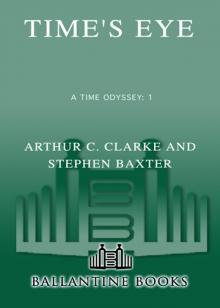 Time's Eye
Time's Eye The Sentinel
The Sentinel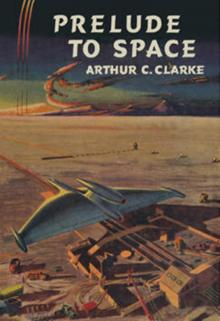 Prelude to Space
Prelude to Space Earthlight (Arthur C. Clarke Collection)
Earthlight (Arthur C. Clarke Collection) 2001: A Space Odyssey
2001: A Space Odyssey Against the Fall of Night
Against the Fall of Night Glide Path
Glide Path The Lost Worlds of 2001
The Lost Worlds of 2001 The Trigger
The Trigger Reach for Tomorrow
Reach for Tomorrow Islands in the Sky
Islands in the Sky The Songs of Distant Earth
The Songs of Distant Earth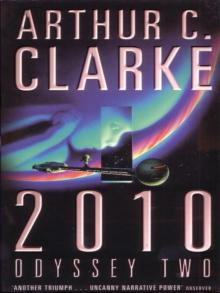 2010: Odyssey Two
2010: Odyssey Two Childhood's End
Childhood's End 3001: The Final Odyssey
3001: The Final Odyssey The Fountains of Paradise
The Fountains of Paradise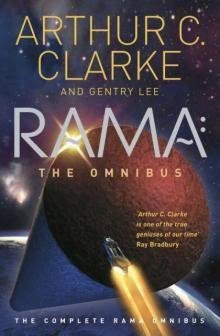 Rama: The Omnibus
Rama: The Omnibus The Hammer of God
The Hammer of God Beyond the Fall of Night
Beyond the Fall of Night Tales From Planet Earth
Tales From Planet Earth 2061: Odyssey Three
2061: Odyssey Three Tales From the White Hart
Tales From the White Hart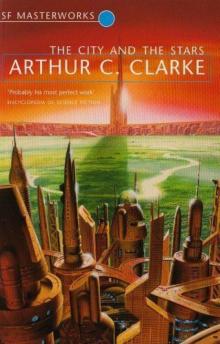 The City and the Stars/The Sands of Mars
The City and the Stars/The Sands of Mars The Star
The Star Imperial Earth
Imperial Earth The Light of Other Days
The Light of Other Days Firstborn
Firstborn The Other Side of the Sky
The Other Side of the Sky Cradle
Cradle The Wind From the Sun
The Wind From the Sun The Ghost From the Grand Banks and the Deep Range
The Ghost From the Grand Banks and the Deep Range The Deep Range
The Deep Range Expedition to Earth
Expedition to Earth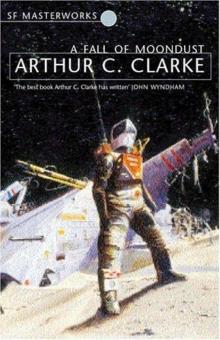 A Fall of Moondust
A Fall of Moondust Dolphin Island (Arthur C. Clarke Collection)
Dolphin Island (Arthur C. Clarke Collection) Richter 10
Richter 10 The City and the Stars
The City and the Stars Tales of Ten Worlds
Tales of Ten Worlds Dolphin Island
Dolphin Island Expedition to Earth (Arthur C. Clarke Collection: Short Stories)
Expedition to Earth (Arthur C. Clarke Collection: Short Stories) Sunstorm
Sunstorm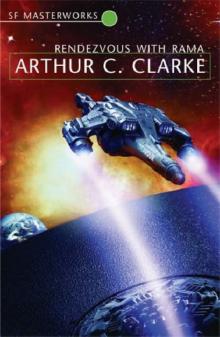 Rendezvous with Rama
Rendezvous with Rama The Collected Stories of Arthur C. Clarke
The Collected Stories of Arthur C. Clarke Trouble with the Natives
Trouble with the Natives Rama Revealed r-4
Rama Revealed r-4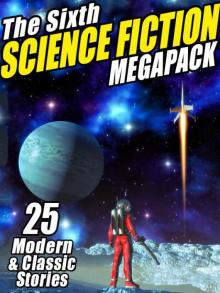 The Sixth Science Fiction Megapack
The Sixth Science Fiction Megapack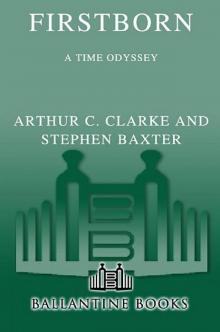 Firstborn to-3
Firstborn to-3 The Ghost from the Grand Banks
The Ghost from the Grand Banks Into the Comet
Into the Comet The Fires Within
The Fires Within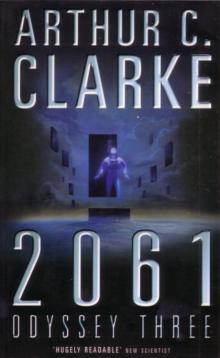 2061: Odyssey 3
2061: Odyssey 3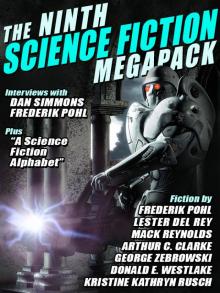 The Ninth Science Fiction Megapack
The Ninth Science Fiction Megapack The Coast of Coral
The Coast of Coral The Ghost from the Grand Banks (Arthur C. Clarke Collection)
The Ghost from the Grand Banks (Arthur C. Clarke Collection) The Space Trilogy
The Space Trilogy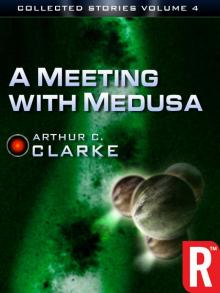 A Meeting With Medusa
A Meeting With Medusa 2001: A Space Odyssey (Arthur C. Clarke Collection: The Odyssey)
2001: A Space Odyssey (Arthur C. Clarke Collection: The Odyssey) Islands in the Sky (Arthur C. Clarke Collection)
Islands in the Sky (Arthur C. Clarke Collection) Rama II r-2
Rama II r-2 Glide Path (Arthur C. Clarke Collection)
Glide Path (Arthur C. Clarke Collection)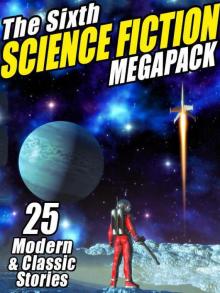 The Sixth Science Fiction Megapack: 25 Classic and Modern Science Fiction Stories
The Sixth Science Fiction Megapack: 25 Classic and Modern Science Fiction Stories Tales from the White Hart (Arthur C. Clarke Collection: Short Stories)
Tales from the White Hart (Arthur C. Clarke Collection: Short Stories) The Reluctant Orchid
The Reluctant Orchid